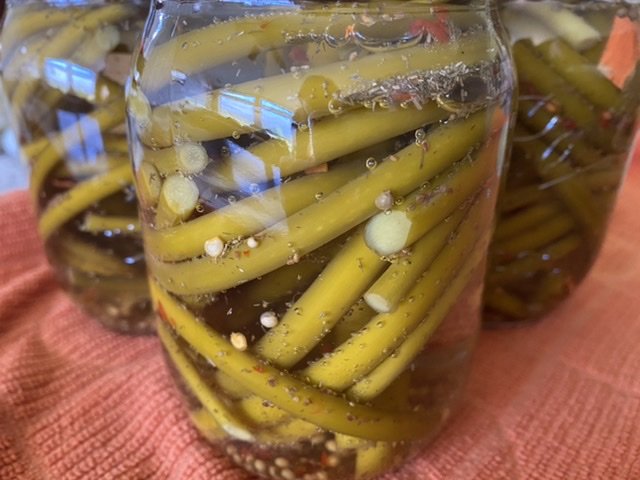If you had observed me in the garden and row crop section over the last month or so, you might have dubbed me a stalker. I’ve been roaming the rows, peaking through leaves, examining fruit for growth and change in color, pruning lower branches and snipping excess flowers. Now my obsession has started to pay off, as we are finally(!) reaping the fruits of our labor.
Summer squash and banana peppers have been rolling in, with a smattering of cherry tomatoes. We’ve also harvested and are curing most of the garlic, potatoes, and onions. But now that the eggplant, bigger tomatoes, beans, other peppers, and corn are trickling in—with hopefully much more to follow— lots of work awaits.
As I was telling the dogs today, “first you seed, then you prep, then you plant, then you weed (and weed and weed), then you wait…and then you harvest and eat and store for later.” They just looked at me blankly and whined for their dinner. But with food prices up and our desire to grow/raise as much of what we eat as possible, now is not the time to sit down and relax.
Maybe you also have extra produce from your own garden, neighbors, or the farmers market. What are your options for prolonging the goodness?
Freezing
Freezing is one easy method for storing all sorts of produce. Tomatoes, beans, grated zucchini, puréed pumpkin, basil pesto. For us, even with three extra freezers, space is still limited. So I have taken to only giving over prime real estate for corn and berries. For the latter, freezing them first on a cookie sheet, and then bagging them, it’s much easier to pull out the amount needed without clumping. Bonus: you might not have the time or desire to make jam in the heat of summer, so you can put it off until cooler days. Plus, I love being able to make a fruit crisp or pie or muffins throughout the winter.
Dehydrating/drying
Another easy way to preserve fruit is by dehydrating it. With either a dehydrator or low oven setting, you can turn peaches, apricots, strawberries, and other delights into dried fruit snacks that can be stored in glass jars or air-tight canisters. Other options include sun-dried tomatoes to adorn pizzas, pastas, and egg dishes. And though I haven’t done it before, I intend to try my hand at tomato and garlic powders this year, along with dehydrated onions. We also store dried beans, but usually just let the pods dry on the vine…if we can beat the rain.
Canning
Probably the most common way to preserve food is via canning. Even if you’ve never given it a go, I’m sure you’ve been the recipient of homemade jam or dilly beans from friends and family. While this method takes a bit of work and sweat upfront, I appreciate the long shelflife of the final results and versatility in where it can be stored (kitchen cabinet, pantry, garage shelving, etc). Plus, building up your stock makes for a quick and easy hostess gift or potluck contribution. Current contents of our shelves include tomato jam, zucchini salsa, onion jam, pickled green beans, pickled green tomatoes, pickled garlic scapes, and jams in various flavors. Now that I have a pressure canner, in addition to my old water bath set-up, I intend to experiment with other fruits and veggies.
Pickled garlic scapes, a first this year
However you intend to store your produce, make sure you stock up on your supplies now. The past couple years have seen a shortage in canning jars and lids. I recently starting buying the reusable lids, with good results. And if you’re like us, you probably still have goodies from last year that you need to use up to make space in your pantry and freezer for this year’s harvest.


